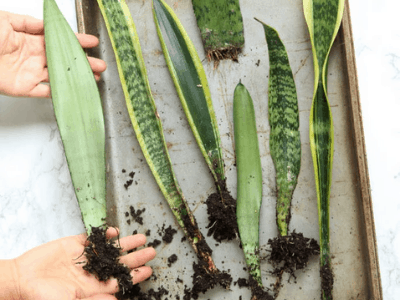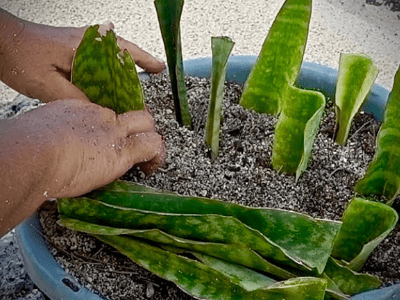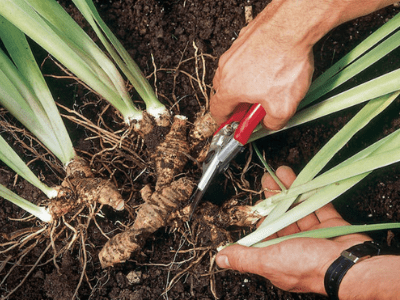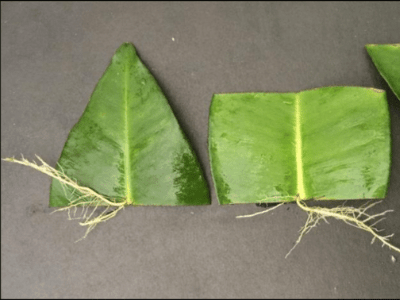Propagating Snake Plant! Is It Needed?

Today I am going to talk about snake plant propagation. If you happen to have at least 2 snake plants…
…at home and you are considering the idea of attempting to do this…
…there are a few options when it comes to propagating these easy-going plants.
Through this post, I’ll share with you my sansevieria experiments I’ve carried out over the last few years…
…also known as ‘prop-experiments’. Propagation is a lot of fun for me because…
…it involves a lot of experimentation + it’s entertaining when you have success.
From the get-go, it’s important to know that this process is downright slow compared to popular trailing plants…
…like pothos, scindapsus, etc. It’s just something you have to practice patience with!
Also, although members of this family are often referred to as ‘low light’ varieties…
…this really refers to the plant’s ability to tolerate lower levels of light.
The plant will be happiest, and will have more opportunity to reproduce, in a position with fairly bright indirect light.
Take more time to adjust your plant to a brighter location gradually by doing this for around six weeks…
….if it has been kept in a darker place. In my old apartment, I grew my snake plants best near windows…
…and an exposed south western wall (I’m in the northern hemisphere).
They grew and flourished where I could watch them as well as enjoy them, and in more places than just a dreary spot in a corner!
The use of social media has led to a significant explosion in the popularity of snake plant propagation…
…but it’s clear from the messages I encounter in my inbox that there are still many new houseplant enthusiasts…
…lacking confidence about how to proceed. So let’s get started. Before that lets take a look of Sean story…
…about his experience having propagate snake plant.
Let us hear Sean’s story
I have a snake plant in my house and I love it. It has an excellent design, with its winding, twisting leaves…
…that look like they’re slithering all over the surface of the potting soil.
The name says enough about how this plant behaves: if you water it regularly…
…it will grow long roots that reach out to find moisture for their next meal.
Snake plants are very easy to propagate; you just need some cuttings of those long roots…
…and then some good potting soil-and voila! You’ve got yourself another snake plant on your hands.

You can also root the plant from cuttings, but the fastest way to get a new snake plant is to divide it. The plant grows out from rhizomes which mass together and multiply as the plant gets older.
Bonnie L. Grant, Certified Urban Agriculturist and writer from gardeningknowhow.com
Here’s the main things
How To Propagate Variegated Snake Plants
For many, the Dracaena plant is currently regarded as a ‘classic houseplant’.
It was prevalent in mid century homes + some years after their widespread spread…
…they became an exemplar of mid-century architecture.
But the last few years have seen even more growth in their popularity resulting in a rebirth of cultivars…
…with new and unique forms, along with seemingly endless options of coloration and variegation.
What are the characteristics of your snake plant?
And most importantly is whether or not you are preserving the variegation when propagating the plant?
This is because propagating plants by cuttings leads to a solid green leaf again, even if the mutants…
…that cause the variegation in these plants do not continue.
If you are considering propagating a cultivar that is less common, then propagation by division is a much better choice!

Go on..
Division Propagation
The easiest method of propagation is by division of a mature snake plant if it has not been repotted…
…for a number of years + has grown around the base of the pot.
Eventually, these white-coloured roots can get contorted and twist the pot!
With a rosette form like these above, you can notice that the solid green birds nest snake plant…
…has begun to produce offsets, which can also be separated to create a brand new plant.
Propagating by division, make sure both divisions have attached roots, and if necessary…
…make sure to chop the tap roots in half (if possible, this will yield a bigger root system).
In other circumstances, some roots are fine + much better than none at all.
Additionally, young plantlets can be difficult to separate without sufficient roots…
…unless they’re then callused + watered/soil propagated until roots are formed.
I have done this with some success but it’s not the most straightforward option in my experience.

Next up…
Leaf Cutting Propagation
The propagation of plants by cuttings can take a longer period of time than those propagated through division…
…though in some cases this method can be more appropriate.
For instance, you may be able to salvage a damaged leaf by taking a cutting.
It’s always best to take cuttings from a healthy plant; however, if a leaf gets damaged…
…one can still root it successfully if caught in time, just cut a few inches above the injured area.
As you can see in the picture below right, one leaf was too damaged to save and as you can see…
…in the photo below left, got too soggy and was unsuccessful.
Don’t be upset if your cuttings don’t grow properly at first.
Make certain you sterilise the blade well before you’re done:
Snake plant leaves’ succulent nature can make them susceptible to bacterial infections.
A blunt scissors can also make your cuttings soggy a sharp, clean cutting is always the best.

Don’t forget which way is up!
After cutting your snake plant leaf, you can either leave it whole+choose to root the bottom end…
…(keeping the length the same), or you can split it into more pieces if you want to increase your chances of success.
You should always remember which side of the cutting is up when you are taking more than one.
If placed upside down, the leaves will not take root.
Increase the surface area of the soil by cutting a ‘V’ shape
Growing strong + healthy plants happens more likely when the cutting has more roots!
Inverting the ‘V’ when taking leaf cuttings increases the surface area of the cutting where roots will grow as well as the leaf sprouts.
Here is another tip : it is easy to determine the stem’s bottom when making more than one propagation from the stem.
Callus your cuttings
Previously, I discussed the importance of callusing your cuttings within a recent post, so I’ll just link it here.
Essentially, this procedure helps to prevent the cutting from becoming soggy or rotting…
…by enclosing its open area with a thin protective layer.
In the photo above, you can see how the cut looks hardened and ready for propagation.
I normally wait 5-7 days until the leaves harden and are ready to propagate a little longer in winter…
…if the leaves are particularly thick.
Go on…
Options For Propagation:
You can also propagate your plants in water, soil, perlite, or sphagnum moss based on your preference.
Some factors influencing this include the plant, your lifestyle, and the conditions in your home.
Water Propagation
In general, I find that water propagation is my preferred method because I enjoy watching plants grow roots!
For snake plants, if the leaves are callused, they will do well in water.
I put them in a glass with about an inch of water + almost forget about them.
A jar with a taller top is perfect for this because it supports the leaf as well.
I have some old brown bottles with a narrower top (but wide enough for the cutting to be removed easily)…
…that always work well. The shape of the glass helps to maintain humidity around the base of the cutting…
…which can speed up the process a bit.
Last but not least…
Soil Propagation
The other most common method is soil propagation plus you won’t be able to observe the roots grow…
…like you can in water, but this way has the advantages of cuttings not needing to transition…
..into potting mix once they are rooted.
Some water propagated stems can have trouble adapting to potting mix, whereas soil-propagated stems…
…are already accustomed to a growing environment like this.
With cuttings in soil, rooting can be slow and watering can be tricky at times…
…but if you are consistent with their care, this is a great option.
______________________________________________________________________________________________________________________________
Sum Up
See having Snake plant is good choice for you to have! It’s cool, its famous, it’s easy to have and care!
What else do you need? In this pandemic time like this, is a good choice for you to have an new activity…
…and having snake plant is a good choice for you to have!
Conclusion
Last thing for sure. This plant need to be care carefully, remember plant need the “love” too.
Alright that’s all for today! Do you have any questions about all of this?
Or do you want to add some method for propagating and care snake plant?
Let me know your recommendation from the comment below.
There are still many recent and interesting articles about Snake Plants..
..as well as other unique information from All Things Gardener..
For further information and other inquiries you can contact us here
I hope you can now take care your snake carefully and grow it big!
Thanks for reading this article! Bye!

